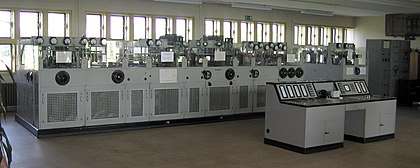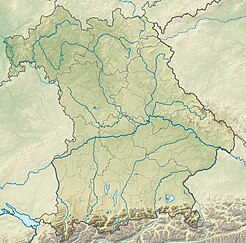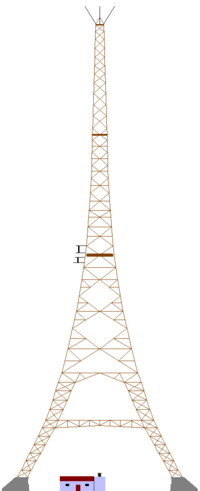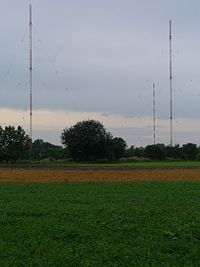Ismaning transmitter
|
Ismaning transmitter
|
|||||||||||||||||||||||||||||||||||||||||||||||||||||||||||||||||||||||||||||||||||||||||||||||||||||||||||||||||||||||||||||||||||||||||||||||||||||||||||||||||||||||||||||||||||||||||||||||||||||||||||||||||||
|---|---|---|---|---|---|---|---|---|---|---|---|---|---|---|---|---|---|---|---|---|---|---|---|---|---|---|---|---|---|---|---|---|---|---|---|---|---|---|---|---|---|---|---|---|---|---|---|---|---|---|---|---|---|---|---|---|---|---|---|---|---|---|---|---|---|---|---|---|---|---|---|---|---|---|---|---|---|---|---|---|---|---|---|---|---|---|---|---|---|---|---|---|---|---|---|---|---|---|---|---|---|---|---|---|---|---|---|---|---|---|---|---|---|---|---|---|---|---|---|---|---|---|---|---|---|---|---|---|---|---|---|---|---|---|---|---|---|---|---|---|---|---|---|---|---|---|---|---|---|---|---|---|---|---|---|---|---|---|---|---|---|---|---|---|---|---|---|---|---|---|---|---|---|---|---|---|---|---|---|---|---|---|---|---|---|---|---|---|---|---|---|---|---|---|---|---|---|---|---|---|---|---|---|---|---|---|---|---|---|---|---|
| Basic data | |||||||||||||||||||||||||||||||||||||||||||||||||||||||||||||||||||||||||||||||||||||||||||||||||||||||||||||||||||||||||||||||||||||||||||||||||||||||||||||||||||||||||||||||||||||||||||||||||||||||||||||||||||
| Place: | Ismaning | ||||||||||||||||||||||||||||||||||||||||||||||||||||||||||||||||||||||||||||||||||||||||||||||||||||||||||||||||||||||||||||||||||||||||||||||||||||||||||||||||||||||||||||||||||||||||||||||||||||||||||||||||||
| Country: | Bavaria | ||||||||||||||||||||||||||||||||||||||||||||||||||||||||||||||||||||||||||||||||||||||||||||||||||||||||||||||||||||||||||||||||||||||||||||||||||||||||||||||||||||||||||||||||||||||||||||||||||||||||||||||||||
| Country: | Germany | ||||||||||||||||||||||||||||||||||||||||||||||||||||||||||||||||||||||||||||||||||||||||||||||||||||||||||||||||||||||||||||||||||||||||||||||||||||||||||||||||||||||||||||||||||||||||||||||||||||||||||||||||||
| Altitude : | 481 m above sea level NHN | ||||||||||||||||||||||||||||||||||||||||||||||||||||||||||||||||||||||||||||||||||||||||||||||||||||||||||||||||||||||||||||||||||||||||||||||||||||||||||||||||||||||||||||||||||||||||||||||||||||||||||||||||||
| Coordinates: 48 ° 15 ′ 0 ″ N , 11 ° 45 ′ 7.2 ″ E | |||||||||||||||||||||||||||||||||||||||||||||||||||||||||||||||||||||||||||||||||||||||||||||||||||||||||||||||||||||||||||||||||||||||||||||||||||||||||||||||||||||||||||||||||||||||||||||||||||||||||||||||||||
| Use: | Telecommunication system , radio transmitter | ||||||||||||||||||||||||||||||||||||||||||||||||||||||||||||||||||||||||||||||||||||||||||||||||||||||||||||||||||||||||||||||||||||||||||||||||||||||||||||||||||||||||||||||||||||||||||||||||||||||||||||||||||
| Accessibility: | Transmission system not accessible to the public | ||||||||||||||||||||||||||||||||||||||||||||||||||||||||||||||||||||||||||||||||||||||||||||||||||||||||||||||||||||||||||||||||||||||||||||||||||||||||||||||||||||||||||||||||||||||||||||||||||||||||||||||||||
| Owner : | Bavarian radio | ||||||||||||||||||||||||||||||||||||||||||||||||||||||||||||||||||||||||||||||||||||||||||||||||||||||||||||||||||||||||||||||||||||||||||||||||||||||||||||||||||||||||||||||||||||||||||||||||||||||||||||||||||
| Data on the transmission system | |||||||||||||||||||||||||||||||||||||||||||||||||||||||||||||||||||||||||||||||||||||||||||||||||||||||||||||||||||||||||||||||||||||||||||||||||||||||||||||||||||||||||||||||||||||||||||||||||||||||||||||||||||
|
|||||||||||||||||||||||||||||||||||||||||||||||||||||||||||||||||||||||||||||||||||||||||||||||||||||||||||||||||||||||||||||||||||||||||||||||||||||||||||||||||||||||||||||||||||||||||||||||||||||||||||||||||||
| Waveband : | FM transmitter | ||||||||||||||||||||||||||||||||||||||||||||||||||||||||||||||||||||||||||||||||||||||||||||||||||||||||||||||||||||||||||||||||||||||||||||||||||||||||||||||||||||||||||||||||||||||||||||||||||||||||||||||||||
| Radio : | VHF broadcasting | ||||||||||||||||||||||||||||||||||||||||||||||||||||||||||||||||||||||||||||||||||||||||||||||||||||||||||||||||||||||||||||||||||||||||||||||||||||||||||||||||||||||||||||||||||||||||||||||||||||||||||||||||||
| Send types: | DAB , directional radio | ||||||||||||||||||||||||||||||||||||||||||||||||||||||||||||||||||||||||||||||||||||||||||||||||||||||||||||||||||||||||||||||||||||||||||||||||||||||||||||||||||||||||||||||||||||||||||||||||||||||||||||||||||
|
|||||||||||||||||||||||||||||||||||||||||||||||||||||||||||||||||||||||||||||||||||||||||||||||||||||||||||||||||||||||||||||||||||||||||||||||||||||||||||||||||||||||||||||||||||||||||||||||||||||||||||||||||||
| Position map | |||||||||||||||||||||||||||||||||||||||||||||||||||||||||||||||||||||||||||||||||||||||||||||||||||||||||||||||||||||||||||||||||||||||||||||||||||||||||||||||||||||||||||||||||||||||||||||||||||||||||||||||||||
|
|
|||||||||||||||||||||||||||||||||||||||||||||||||||||||||||||||||||||||||||||||||||||||||||||||||||||||||||||||||||||||||||||||||||||||||||||||||||||||||||||||||||||||||||||||||||||||||||||||||||||||||||||||||||
The transmitter Ismaning is a broadcasting station of the Bayerischer Rundfunk in Ismaning , a municipality northeast of Munich. The transmitter system is used for analogue VHF and digital ( DAB ) broadcasting of radio .
The Ismaning location is one of the oldest in the history of radio in Germany . As early as 1932, the first medium wave transmitter was put into operation there, serving as a replacement for the Stadelheim transmitter installed in Bavaria in 1926 for the German hour .
On April 28, 1945, the appeal of the Bavarian Freedom Campaign was broadcast via the transmitter .
antenna
Until 1934, a T-antenna was used as the transmitting antenna , which was attached to two 115 m high freestanding timber frame towers. The towers were made of American pitch pine .
Since the vertical diagram of the T antenna turned out to be unfavorable, it was decided to use a vertical dipole antenna . For this purpose, one of the two wooden towers was dismantled in 1934 and rebuilt on a 39 m high wooden base. After completion of the work, the new antenna carrier had a height of 156 meters and with the booms that carried the antenna it was a total of 163 m.
During the renovation work, broadcasting took place with the help of an L-antenna , which was stretched between the second tower and a provisionally erected wooden mast. The second wooden tower was then dismantled and rebuilt in 1935 at the Nürnberg-Kleinreuth transmitter , where it served as an antenna carrier for the medium-wave transmitter there until 1961. The wooden tower in Ismaning had a dipole antenna in the middle, the feed point of which was at a height of 120 m. From this feed point several wires attached to the outside of the tower led to the jibs at the top of the tower and to attachment points at a height of 80 m. At this height there was a differential transformer inside the tower , which was supposed to prevent the radiated high frequency from flowing away via the feed line.
Transmission technology

1938 by Lorenz , Berlin. The transmitter is now in the Museum for Communication in Frankfurt .
This antenna, developed by C. Lorenz AG in Berlin , is known as a vertical dipole and was a shrinkage-reducing antenna that was optimized for the 740 kHz transmission frequency used from 1934 to 1950 . However, this antenna, which was still in use until 1969, was only able to transmit during the daytime due to the directional beam requirements specified by the Copenhagen Wave Plan . After a new medium wave transmission mast had been erected, the height dipole antenna on the wooden tower was dismantled in 1969. From 1969 to 1977 the wooden tower was used to house transmitting antennas for VHF radio. In 1977 a 100 m high guyed steel lattice mast took over this function, so that the wooden tower no longer had any function from 1977, but was now only a landmarked object. However, the ravages of time were noticeably gnawing at the construction, which was nicknamed "Bavarian Eiffel Tower". Since the tower could apparently no longer be renovated, it was blown up on March 16, 1983. To this day, however, its concrete foundations and the antenna tuning house, which stood under the tower structure, have been preserved.
For the medium wave broadcasting a 171.5 m high, is now against earth insulated guyed tubular mast used, which was completed 1969th It is fed several times in order to achieve flat radiation ( transmission antenna to reduce shrinkage ) and is electrically interrupted by isolators at a height of 56 and 117 m.
With the introduction of the Geneva Wave Plan , the Bavarian Broadcasting Corporation was assigned the frequency 909 kHz for the Ismaning location, which, however, would have had to be faded out in the direction of Great Britain and Romania in order not to interfere with the local stations on this frequency. Since this would have required a system with a total of four masts and the costs for it were too high for the BR, he decided instead to operate the 801 kHz frequency actually allocated to the Dillberg site at the Ismaning site with a transmission power of 600 kilowatts. Although this frequency also required fading - this time in a northeasterly direction so as not to interfere with the emission and reception of the transmitter in St. Petersburg with the same frequency - a small reflector mast was sufficient for this. This 71 m high guyed steel truss mast, insulated from earth, near the tubular mast described was erected in 1978. With the power reduction of the transmitter to 100 kilowatts in 1994, it became unnecessary, since with this power it is possible to broadcast at night with omnidirectional radiation without the expected disturbance of the transmitter in Saint Petersburg. It was dismantled in 1999 and served as a transmission mast at the medium-wave transmitter Hof (Hohensaas) until 2016 .
As a reserve antenna, there is a 105 m high guyed steel truss mast, which was built in 1947 and is insulated from the ground, in the immediate vicinity of the station building. Until 1969 this mast, which was originally used to broadcast the AFN program on medium wave, was 126 m high and carried transmitting antennas for VHF from 1958 to 1969. In 2007 the mast was reduced to about 70 m and the base point was earthed. Since then it has served as an antenna carrier for directional radio.
Because of the requirements of the Copenhagen wave plan , this medium-wave transmitter of the Bavarian radio had to be operated from 1951 during the night with directional radiation (see above). The transmitting antenna on the wooden tower at that time could not be used for this, which is why a new directional antenna, consisting of two 94 m high steel framework masts insulated from the ground, was built on the station area.
This new transmitting antenna was used to broadcast the Bavarian Broadcasting Program in this form until 1969. From 1969 until the end of operations in 1994, the antenna system that is still in place today served to distribute the AFN program on the medium wave frequency 1107 kHz. In contrast to the time before 1969, transmission was now operated with omnidirectional characteristics, in that only one mast was actively fed and the other served as a reserve antenna. The northeast of these two masts was dismantled at the end of April 2010.
As a result of the Geneva wave plan and the loss of the far-reaching exclusive frequency of 1602 kHz, the BR invested in its shortwave frequency of 6085 kHz instead, whereby political pressure is said to have played a role. A large transmitter of the same type was purchased as was used in the Wertachtal shortwave station built in the same period, with a transmitter output power of 500 kW. This transmission system, which was obviously completely oversized for the purposes of the BR, led to ridicule in the media of the time and was never operated at full power, but only with an output of 100 kW. A dipole with omnidirectional characteristics, erected in 1976 on two 35 m high guyed steel truss masts each and an angled dipole antenna with omnidirectional characteristics, which was put into operation in 1980 on three 55 m high guyed steel truss masts, served as shortwave transmitting antennas. After the shortwave operation was finally stopped on October 1, 2010, both antenna systems were dismantled.
From 1977 to 2010, a silvery gray, about 100 m high guyed and grounded steel lattice mast with dipole fields at its tip near the station building served to broadcast the VHF programs. In 2010 this transmission mast was replaced by a new transmission mast due to signs of aging.
The Voice of America , later the International Broadcasting Bureau (IBB), operated extensive shortwave transmission systems near Ismaning until 1994 , but they have since been completely dismantled. The medium-wave transmission antenna for 1197 kHz consisted of four steel truss masts arranged in a square, insulated from earth, which were built in 1949 and overhauled in the mid-1990s. This system offered the possibility of directional radiation with switchable directional characteristics.
On March 16, 2007, these four medium-wave transmission masts were dismantled. At the end of 2007, all other systems (satellite up and down links) were dismantled and the site was completely abandoned.
In 2010, a 210 meter high transmission mast for VHF radio was erected.
With a transmission power of 11 kilowatts, the private radio chain Radio Arabella is the frequency with the greatest range of all VHF radio programs on the Ismaning station. The programs of the Bavarian Broadcasting Corporation have a higher output power, but do not go further because of the weaker input power (10 kW).
Frequencies and Programs
Medium wave 801 kHz
After many years of broadcasting the Bayern 1 program , the 801 kHz frequency in Ismaning was used since October 8, 2007 to broadcast the Bavarian Open Radio program, which was renamed on3-radio on May 5, 2008 . The Bayern plus program has been broadcast since January 10, 2011 . (Transmission power up to 1994: 600 kW, then 100 kW EMRP ). On September 30, 2015, the final shutdown of all Bavarian MW transmitters took place. On June 21, 2017, the medium-wave mast was blown up.
Medium wave 1107 kHz
The medium wave transmitter operated by the Bavarian Broadcasting Corporation broadcast the AFN program on the frequency 1107 kHz until 1994 . Both the transmitter and the southwestern one of the two antenna masts are still there, but out of order.
Medium wave 1197 kHz
The Voice of America , later the International Broadcasting Bureau, broadcast various programs on the frequency 1197 kHz : For example, “VoA Europe” and, since the Yugoslav wars in the 1990s, broadcasts in Serbian and Croatian from Radio Free Europe . The transmitter has been switched off since March 27, 2005. The plant has been completely dismantled since the end of 2007.
Short wave 6085 kHz
Since May 2005, the KW transmitter Ismaning of the Bavarian broadcasting company has been operated digitally on 6085 kHz . The current program B5 was broadcast . On October 1, 2010 this service was discontinued due to cost-cutting measures on the part of the BR. The shortwave transmitter and the shortwave antenna were completely dismantled in the course of 2011.
Ultra short wave (VHF)
In the antenna diagram, in the case of directed radiation at VHF, the main radiation directions are given in degrees.
|
Frequency (MHz) |
program | RDS PS | RDS PI | regional capitalization |
ERP (kW) |
Antenna diagram |
polarization |
|---|---|---|---|---|---|---|---|
| 91.3 | Bavaria 1 |
B1_Obb__ BAYERN_1 |
D611 (regional), D311 |
Upper Bavaria | 25th | directed: 160–250 ° | Horizontal |
| 88.4 | Bavaria 2 |
Bayern2S Bayern_2 |
D412 (regional), D312 |
Southern Bavaria | 25th | directed: 160–250 ° | Horizontal |
| 97.3 | Bayern 3 | BAYERN 3 | D313 | - | 25th | directed: 160–250 ° | Horizontal |
| 105.2 | Arabella | ARABELLA | D78A | - | 11 | round | Horizontal |
| 103.2 | BR classic | BR class | D314 | - | 25th | round | Horizontal |
| 90.0 | B5 currently | B5_akt__ | D315 | - | 25th | directed: 160–250 ° | Horizontal |
Digital radio (DAB)
DAB + is broadcast in vertical polarization and in single-frequency mode with other transmitters.
See also
Web links
- The transmitter Ismaning - private side
- Ismaning transmitter. In: Structurae (The wooden transmission tower in Ismaning)
- Ismaning transmitter. In: Structurae (Rohrmast Ismaning)
- Ismaning transmitter. In: Structurae (Ismaning reflector mast)
- Ismaning transmitter. In: Structurae (directional antenna Ismaning)
- Ismaning transmitter. In: Structurae (VHF transmission mast Ismaning)
- Ismaning transmitter. In: Structurae (Masts of the Voice of America in Ismaning)
- merkur-online.de: "Freedom Campaign Bavaria" - Report and picture of the "Ismaninger Eiffel Tower"
- Open House 2010 - private page
Individual evidence
- ↑ a b c Bayerischer Rundfunk: Medium wave mast Ismaning blown up ( Memento from August 11, 2017 in the Internet Archive )
- ^ BR Online ( Memento from December 5, 2010 in the Internet Archive )
- ↑ https://www.br.de/unternehmen/inhalt/technik/mittelwelle-verschaltung-radio-100.html BR-Mittelwelle only broadcasts until September 30th
- ↑ Bayerischer Rundfunk, press release September 27, 2010
- ↑ http://www.wabweb.net/radio/radio/ismaning.htm




